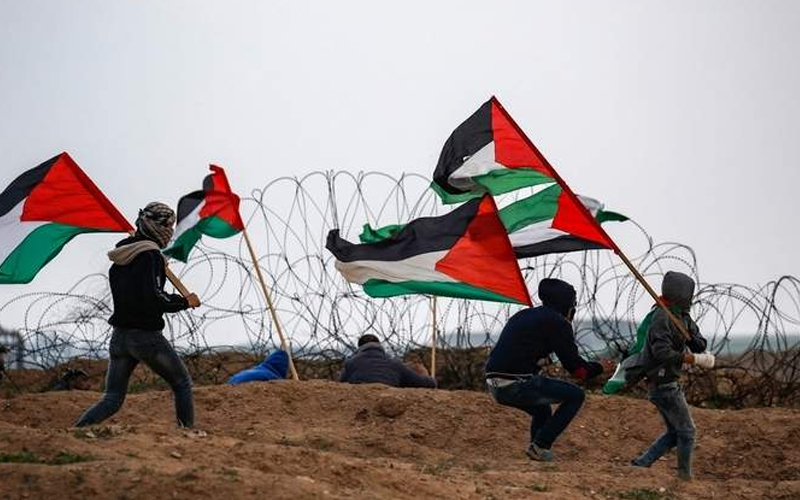Gaza City: Thousands of Palestinian protesters gathered along the Gaza-Israel border on Saturday to mark the first anniversary of mass demonstrations for the right of return for Palestinian refugees.
Here are some facts about the protests and the deadly clashes that have accompanied them:
Dead and injured
The first day, March 30, 2018, saw 20 Palestinians killed across the Gaza Strip. Since then dozens more have been killed during the at least weekly protests.
Around 200 Palestinians have been killed, with the vast majority shot by Israeli snipers, though others have been hit by tear gas canisters or shrapnel.
One Israeli soldier was shot dead by a Palestinian sniper.
The Palestinians killed have been distributed over five designated protests sites along the border.
Some have proved more deadly than others. In particular, Khan Yunis in southern Gaza, with at least 54 deaths, and east of Gaza City, with at least 42, have proved particularly dangerous, according to the Palestinian Centre for Human Rights.
A further 6,500 people have been shot, according to the Gaza health authorities, the vast majority in the legs.
Palestinian attacks
While many protesters have remained far back from the heavily fortified border fence and demonstrated peacefully, other have approached in numbers and clashed with Israeli forces.
They have routinely burned tyres, thrown stones and hurled homemade explosives at the fence and towards soldiers on the other side. There have also been attempts to breach the fence.
The army says since the protests began, there have been 18 incidents of gunfire along the border and around 600 Molotov cocktails thrown.
A particular concern has been incendiary devices attached to balloons, which are floated across the border. In total, these balloons have sparked 1,963 fires and have caused damage across 35 square kilometres (nearly 14 square miles) of land, according to figures published by the army.
Who are the dead?
The overwhelming majority of those killed have been male and young. Around 40 have been under 18, according to UNICEF.
Two journalists in marked press vests and three medics have been killed, including 22 year-old Razan al-Najjar. Her case grabbed global attention.
Israel says it is investigating 11 deaths, including Najjar’s.
The political affiliations of those killed has been a matter of debate.
After more than 60 people were killed in demonstrations against the transfer of the US embassy to Jerusalem on May 14, Israel seized on comments by a Hamas official that the vast majority were affiliated with the movement, which both the European Union and the United States blacklist as a terrorist group.
Others said the official was potentially exaggerating the movement’s role and no official figures exist on political affiliation.
[source_without_link] Agence France-Presse[/source_without_link]

